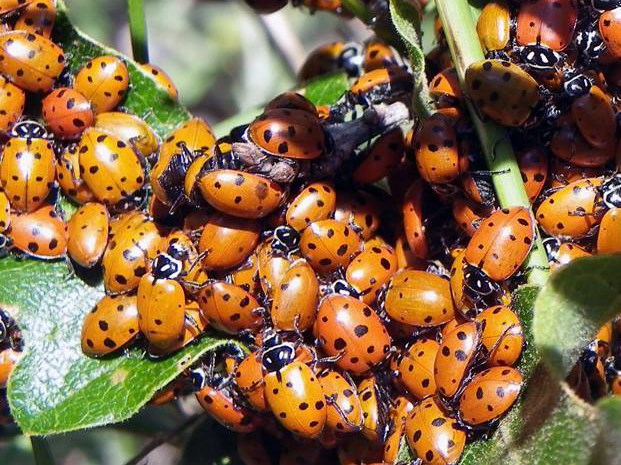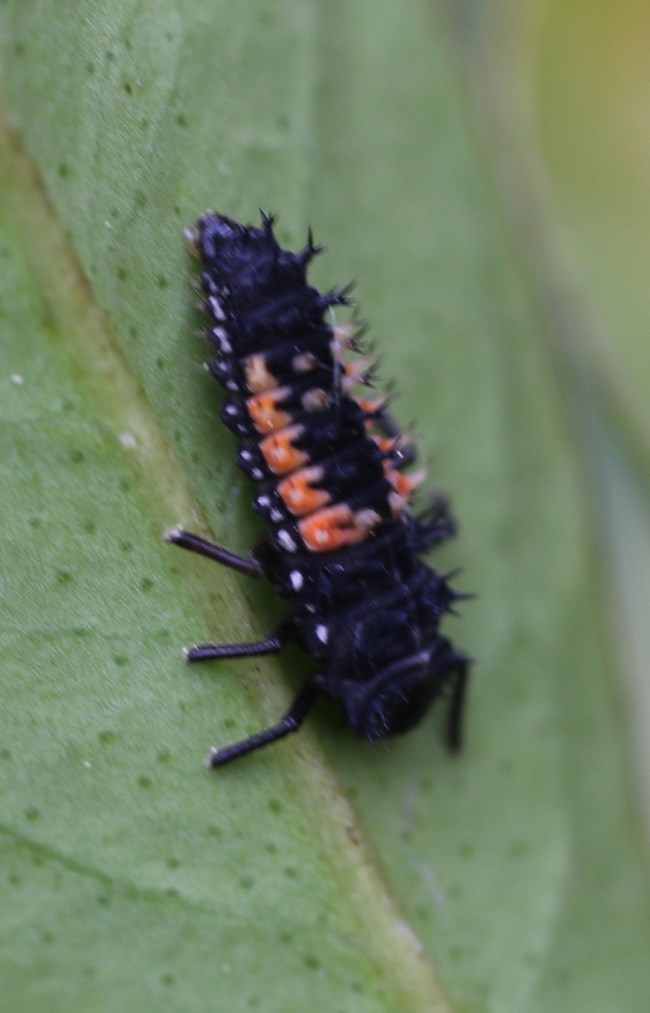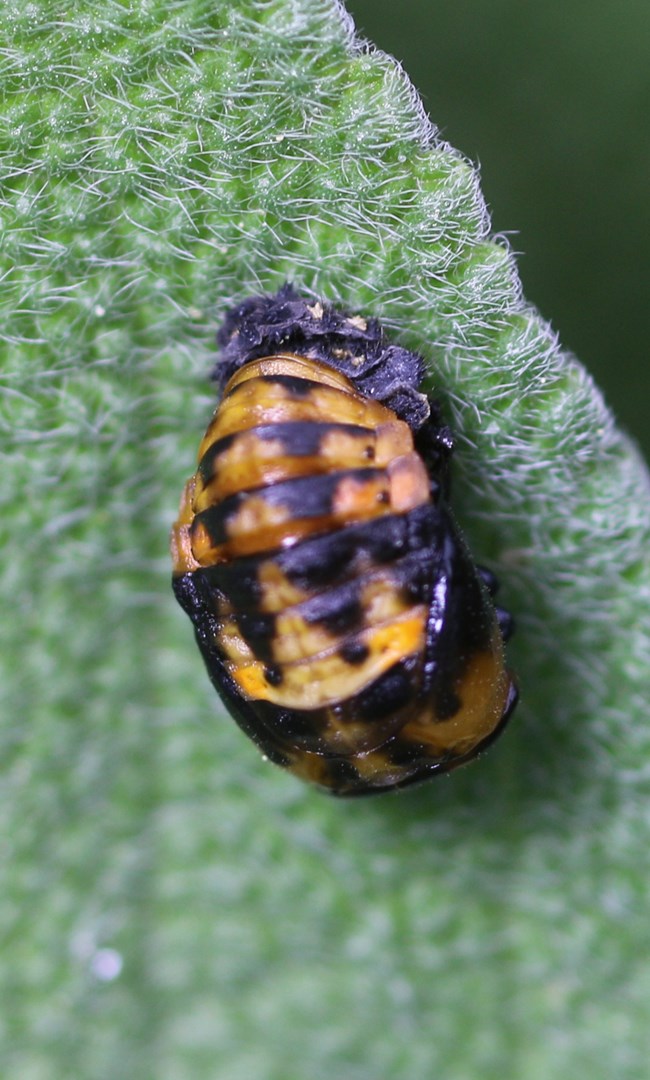Last updated: July 31, 2020
Article
Ladybug

NPS
General Description
“Ladybug” is a curious name for our common and beloved garden visitor. The word “lady” originated during the Middle Ages in Europe. The ladybug’s healthy appetite for plant-destroying pests linked it to the beneficial Virgin Mary (Our Lady). The second half of its name is an American quirk. Ladybugs are not actually true bugs (Hemiptera); they are beetles (Coleoptera) in the family, Coccinellidae. Outside the US, they are known, more accurately, as ladybird beetles.
Not all ladybugs are red with black spots. In fact, their colors range from red to yellow to black with a variety of patterns—not surprising given almost 6000 Coccinellidae species worldwide and almost 500 species in North America. Even within some species, color patterns vary. Most ladybugs, however, are less than 10 mm long, have an oval to round shape with rounded backs and flat undersides, as well as partly hidden heads and short antennae. Like all beetles, ladybugs have two sets of wings. The outer wings (often spotted), called elytra, are hardened or leathery to protect the more delicate flight wings beneath. In Oregon and California, a common native is the convergent lady beetle (Hippodamia convergens).
Habitat and Distribution
Globally distributed, ladybugs occupy a variety of habitats, including forests, meadows, agricultural fields, and of course, your garden.
Behavior and Diet
Best known for eating aphids, scale insects, and mites, most but not all ladybug species are predatory, though some species supplement their diet with pollen and nectar. A few ladybug species eat plants, and one genus (Psyllobora) eats fungus—a welcome help for owners of vineyards afflicted with powdery mildew.
Ecology
Ladybugs fall prey to birds, small mammals, and other predatory insects, like wasps, though many ladybug species have a powerful defense. When attacked, they exude a toxic, bad tasting, yellowish alkaloid from their leg joints. The bright red coloring of many ladybugs acts as a warning to predators of this toxic defense, a trait known as aposematism.

Charles Schelz
Life Cycle
Climate, species, and food availability are among the drivers of how many new generations a ladybug can produce in its lifetime. In many western US locations, convergent lady beetles emerge after a long fall and winter metabolic slow down (diapause) to mate and lay several batches of eggs in spring. The tiny (1 mm) yellow eggs are laid on the underside of vegetation, usually near a plentiful food source, like an aphid colony. In a few days, the eggs hatch into larvae that typically look like a flattened but prickly caterpillar with 6 legs and a tapered tail end. On a steady diet of aphids, the larvae grow through several sets of skin (instars), appearing dark with orange spots in the later stages.

Charles Schelz
After a few weeks, they stop moving and harden into a motionless pupa attached to vegetation, inside which their adult body develops over 3 to 12 days. This complete metamorphosis, from egg to larva to pupa to adult, is called holometabolism. After emerging as a full-grown adult, they can mate soon if conditions allow. By fall in California populations, adults typically cluster together by the thousands, likely drawn together by aggregation pheromones, to overwinter at higher elevations in a state of diapause. Convergent lady beetles don’t typically live longer than a few months to a year.
Fun Facts
-
Ladybugs breathe air through openings in their abdomen and thorax, called spiracles.
-
Counting spots on a ladybird’s back does not indicate its age, contrary to popular belief.
-
Ladybugs are the official state insect of Delaware, Massachusetts, New Hampshire, New York, North Dakota, Ohio, and Tennessee.
Conservation
One threat to native ladybugs is competition from nonnative invasive ladybugs that have been introduced to North America for pest control. Two common nonnatives in the Pacific Northwest are the Asian spotted, or “harlequin,” ladybird beetle (Harmonia axyridis), and the seven-spotted lady beetle (Coccinella septempunctata). Another threat is when large clusters of ladybugs are collected from winter aggregations for pest control down at lower elevations—a faulty strategy anyway since the transplanted ladybugs often fly off upon release. Better to attract ladybugs to your garden by planting their favorite daisy and umbel family flowers.
Where to See
Ladybugs occur in Lava Beds NM, Redwood NSP, Whiskeytown NRA, and are likely to occur at Lassen Volcanic NP.
Learn More
https://www.pacifichorticulture.org/articles/garden-allies-lady-beetles/
Identify a ladybug:
https://www.discoverlife.org/20/q?guide=Ladybug
Download a pdf of this article.
Prepared by Sonya Daw
NPS Klamath Inventory & Monitoring Network
Southern Oregon University
1250 Siskiyou Blvd
Ashland, OR 97520
Featured Creature Edition: July 2020
